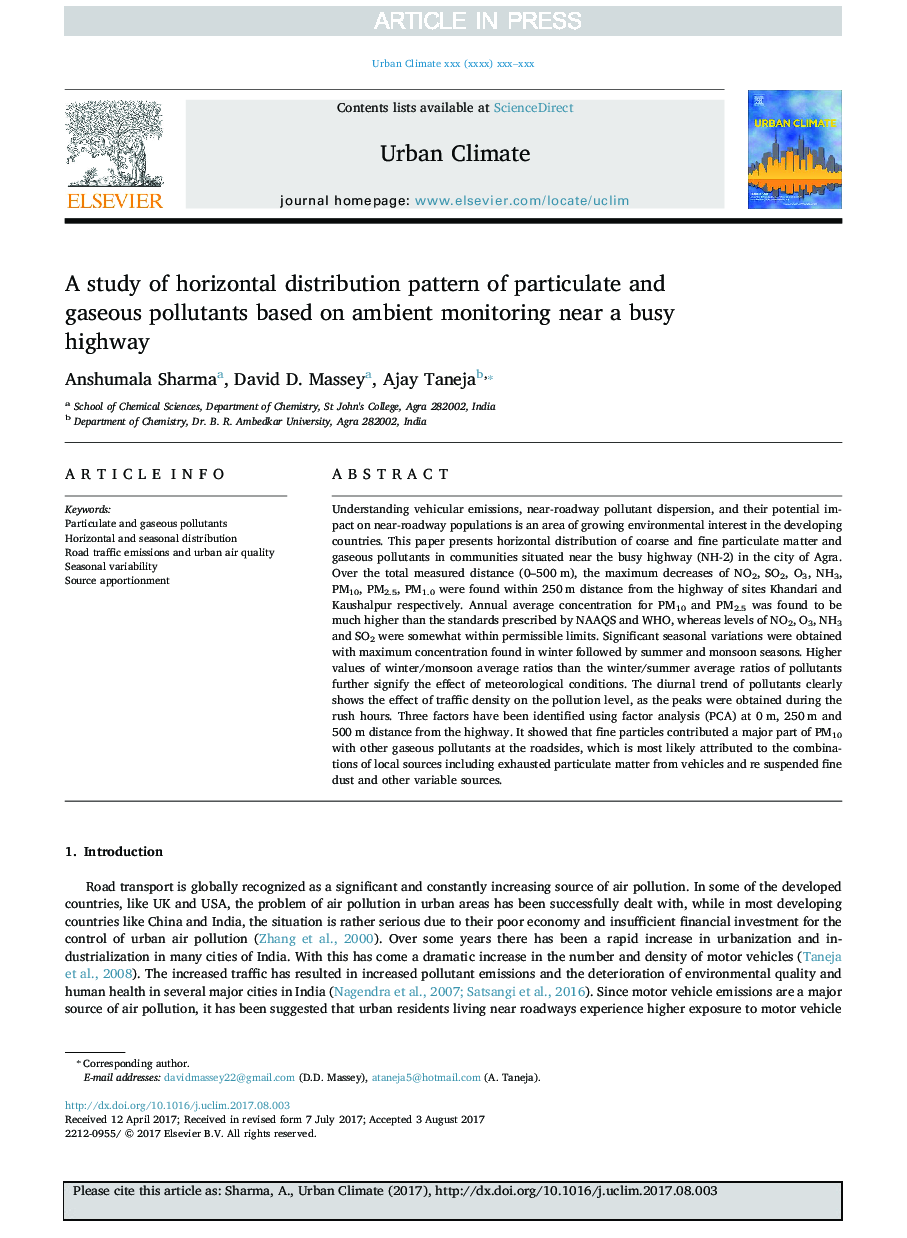| Article ID | Journal | Published Year | Pages | File Type |
|---|---|---|---|---|
| 6576906 | Urban Climate | 2018 | 14 Pages |
Abstract
Understanding vehicular emissions, near-roadway pollutant dispersion, and their potential impact on near-roadway populations is an area of growing environmental interest in the developing countries. This paper presents horizontal distribution of coarse and fine particulate matter and gaseous pollutants in communities situated near the busy highway (NH-2) in the city of Agra. Over the total measured distance (0-500Â m), the maximum decreases of NO2, SO2, O3, NH3, PM10, PM2.5, PM1.0 were found within 250Â m distance from the highway of sites Khandari and Kaushalpur respectively. Annual average concentration for PM10 and PM2.5 was found to be much higher than the standards prescribed by NAAQS and WHO, whereas levels of NO2, O3, NH3 and SO2 were somewhat within permissible limits. Significant seasonal variations were obtained with maximum concentration found in winter followed by summer and monsoon seasons. Higher values of winter/monsoon average ratios than the winter/summer average ratios of pollutants further signify the effect of meteorological conditions. The diurnal trend of pollutants clearly shows the effect of traffic density on the pollution level, as the peaks were obtained during the rush hours. Three factors have been identified using factor analysis (PCA) at 0Â m, 250Â m and 500Â m distance from the highway. It showed that fine particles contributed a major part of PM10 with other gaseous pollutants at the roadsides, which is most likely attributed to the combinations of local sources including exhausted particulate matter from vehicles and re suspended fine dust and other variable sources.
Related Topics
Physical Sciences and Engineering
Earth and Planetary Sciences
Earth and Planetary Sciences (General)
Authors
Anshumala Sharma, David D. Massey, Ajay Taneja,
